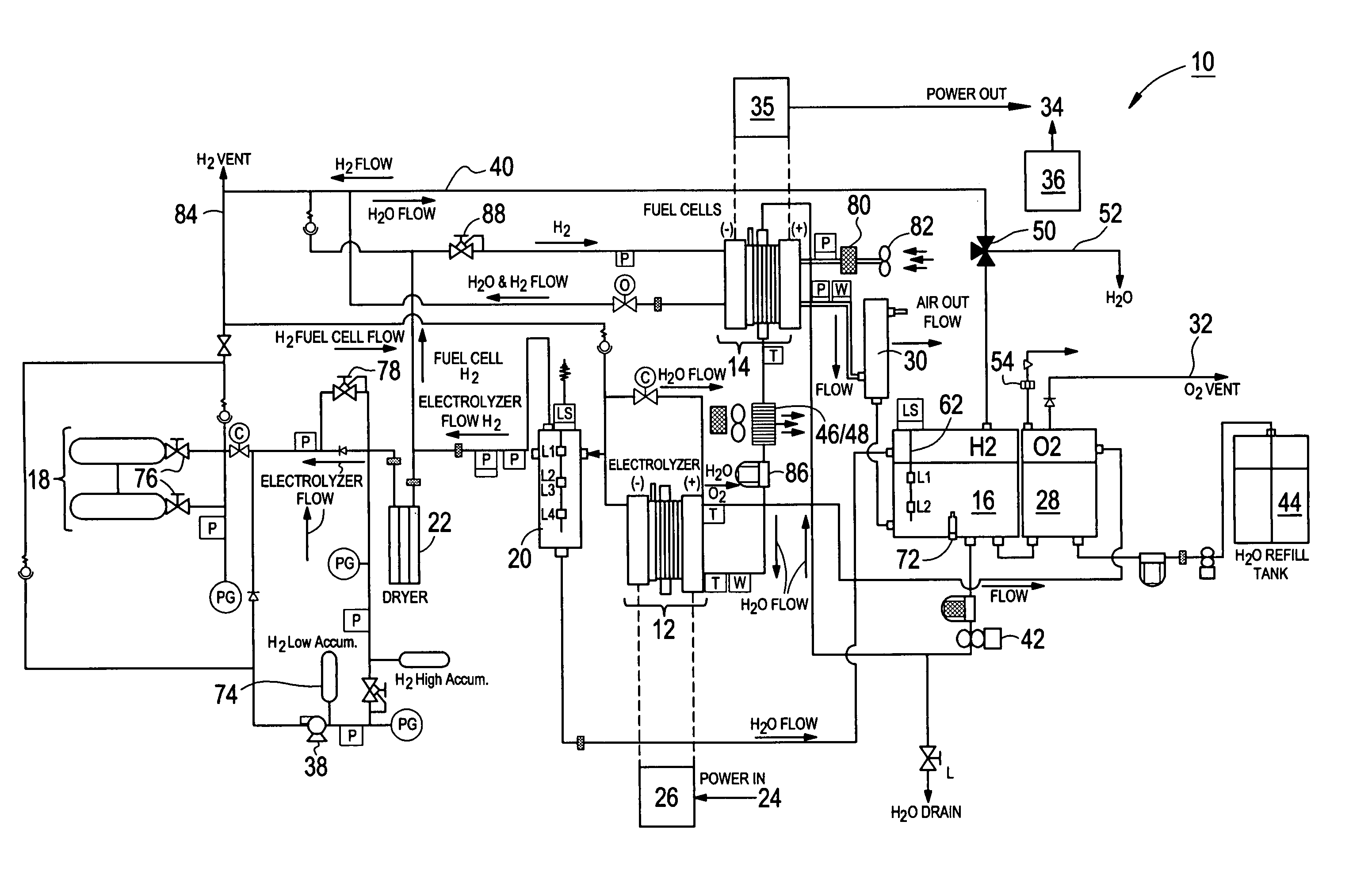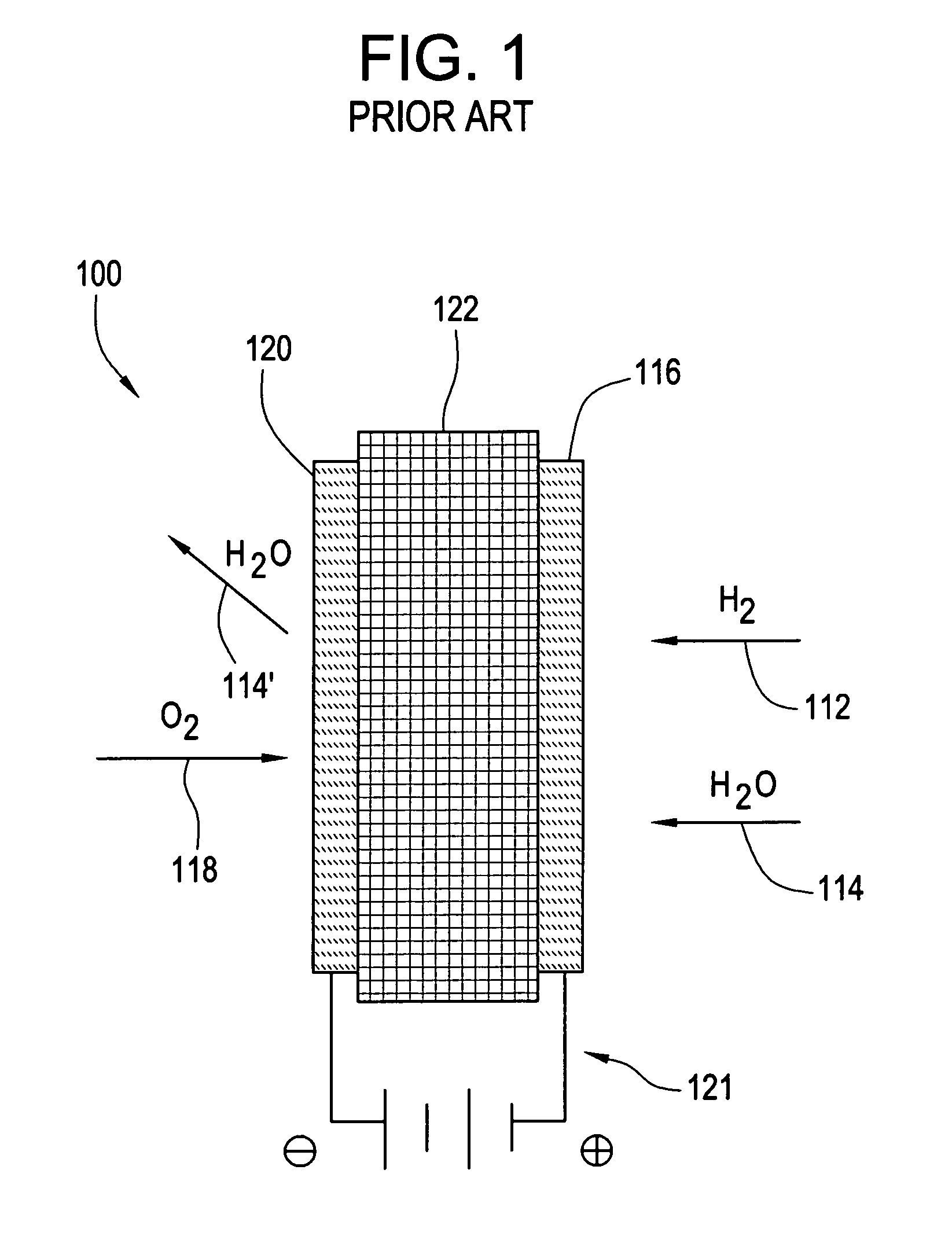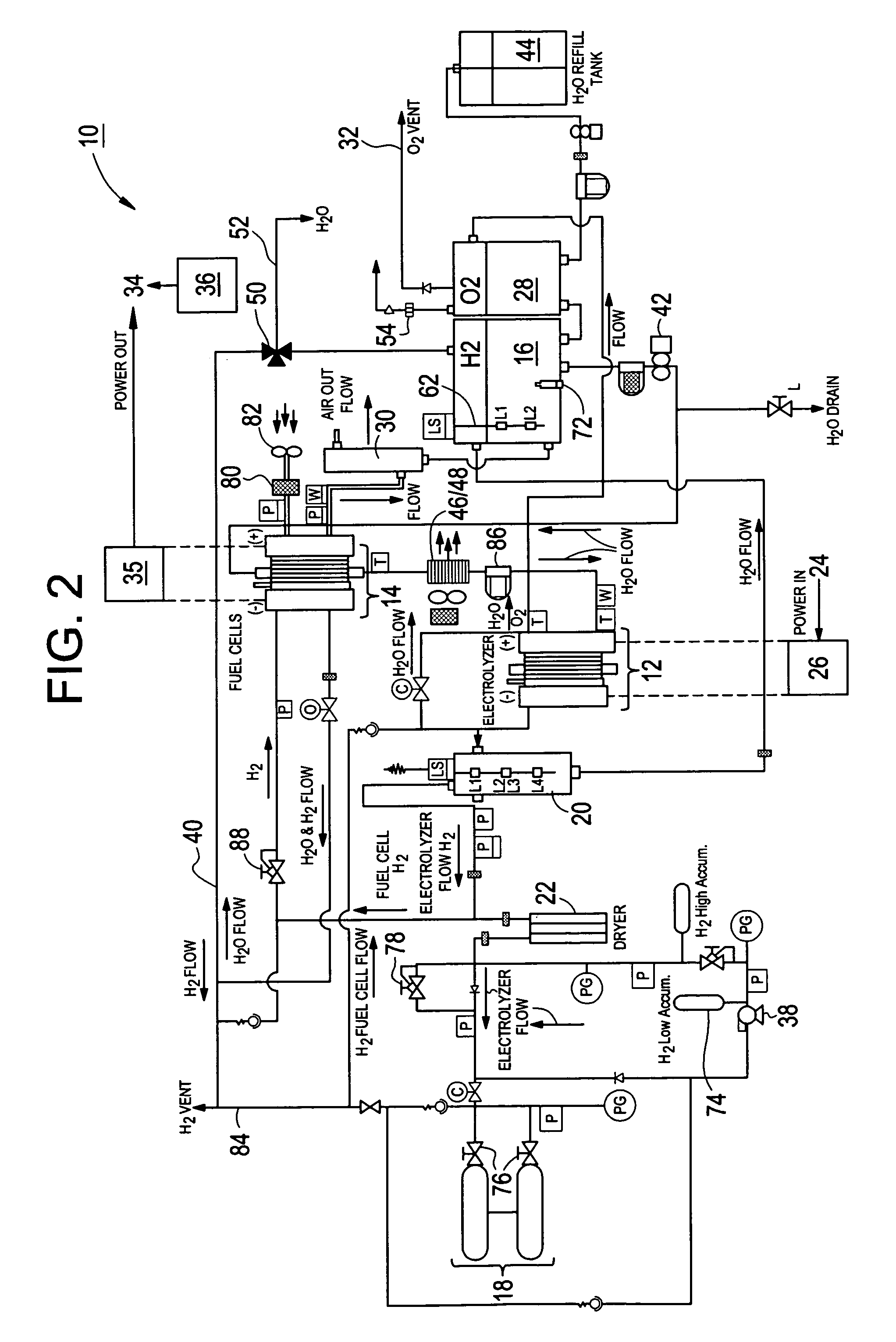Drainage system and process for operating a regenerative electrochemical cell system
a regenerative fuel cell and electrochemical technology, applied in the field of electrochemical cells, can solve the problems of limited size of water storage vessels employed in regenerative fuel systems, prolonged periods of fuel cell operation,
- Summary
- Abstract
- Description
- Claims
- Application Information
AI Technical Summary
Problems solved by technology
Method used
Image
Examples
Embodiment Construction
[0016]A regenerative fuel cell system and a process for operating the system are described. The regenerative fuel cell system comprises a drainage system for accommodating excess production of water during prolonged operation of a fuel cell employed in the regenerative fuel system. As used herein, the term “prolonged” is arbitrarily used and depends on numerous factors including, but not limited to, the capacity and number of water storage devices employed in the system, the number of fuel cells employed, hydrogen capacity, configuration of the system, and the like. The drainage system described herein prevents system shut down due to overproduction of water from operation of the fuel cell or otherwise. As will be described in greater detail, in one embodiment, the drainage system is preferably disposed intermediate to the fuel cell outlet and a water storage device adapted to receive water produced by the fuel cell. In another embodiment, the drainage system is disposed at the wate...
PUM
| Property | Measurement | Unit |
|---|---|---|
| pressure | aaaaa | aaaaa |
| pressures | aaaaa | aaaaa |
| pressures | aaaaa | aaaaa |
Abstract
Description
Claims
Application Information
 Login to View More
Login to View More - R&D
- Intellectual Property
- Life Sciences
- Materials
- Tech Scout
- Unparalleled Data Quality
- Higher Quality Content
- 60% Fewer Hallucinations
Browse by: Latest US Patents, China's latest patents, Technical Efficacy Thesaurus, Application Domain, Technology Topic, Popular Technical Reports.
© 2025 PatSnap. All rights reserved.Legal|Privacy policy|Modern Slavery Act Transparency Statement|Sitemap|About US| Contact US: help@patsnap.com



